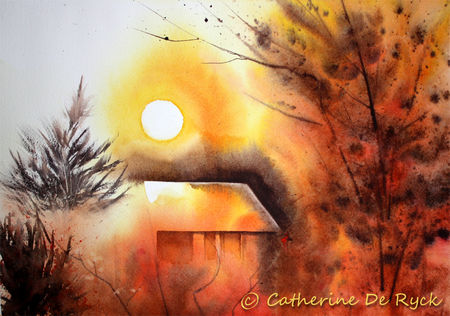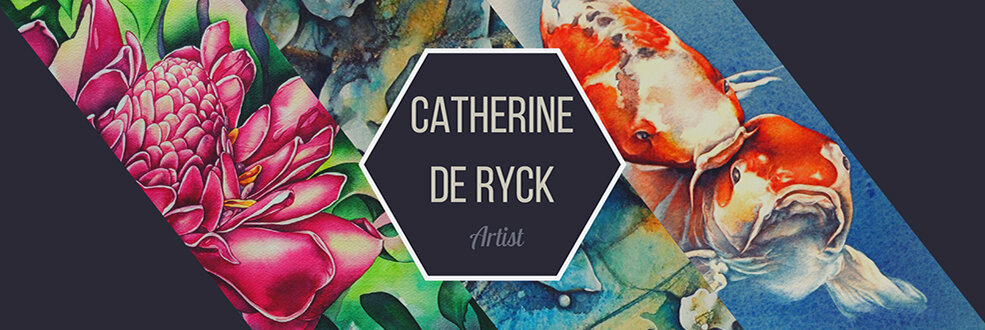Ambiance Nuit / Night Atmosphere : Roland Palmaerts

Roland Palmaerts, photo Monique Reifenberg.
Les 2 et 3 mai derniers, j'ai participé au stage de Roland Palmaerts : Ambiances nocturnes et passages du clair-obscur. Le clair-obscur est un terme artistique qui désigne le contraste entre l'ombre et la lumière. Il décrit généralement les contrastes audacieux qui peuvent affecter toute une composition mais est également utilisé par des artistes pour dépeindre des effets lumineux, allant de la valeur la plus claire à la plus sombre, afin de créer une illusion de profondeur et/ou d'objets tri-dimensionnels. Ce procédé a été mis au point dès la Renaissance mais fut porté à son apogée par Le Caravage et ses suiveurs, puis par des peintres des écoles du nord, notamment Rembrandt ou William Turner.
On 2nd and 3rd May, I attended to Roland Palmaerts's workshop : Night atmospheres and Chiaroscuro (Italian for light-dark). Chiaroscuro is a term in art for a contrast between light and dark. The term is usually applied to bold contrasts affecting a whole composition, but is also more technically used by artists to create a gradual gradation from light to dark values in order to give the illusion of depth and/or three-dimensional objects. This technique was concieved during the Renaissance but reached its apogee thanks to The Caravagge and his followers, then by painters from Northern schools, as Rembrandt or William Turner.

Red Light. 26 x 36 cm. 2009. Toute reproduction, totale ou partielle, est strictement interdite. Any (total or partial) reproduction of this picture is strictly forbidden.
Roland Palmaerts nous a montré comment transposer, à l'aquarelle, cette technique principalement utilisée en peinture à l'huile. En effet, une multitude d'effets lumineux peuvent être créés selon le choix des couleurs et des types de pigment, de leur conditionnement, de la prise et de la pose de ces mêmes couleurs en fonction du degré d'humidité du papier et de la quantité d'eau présente dans l'outil.
Roland Palmaerts showed us how to transpose this technique, mainly used in oil painting, to watercolour. Indeed, a multitude of light effects can be created according to the choice of colours and types of pigment, the choice of their packaging, the way the artist take and lay down colour depending on the stage of paper wetness and the amount of water in the brush.

Moonlight. 24 x 24 cm. 2009. Toute reproduction, totale ou partielle, est strictement interdite. Any (total or partial) reproduction of this picture is strictly forbidden.
Les deux aquarelles présentées ci-dessus ont été réalisées durant le stage, en un seul temps de séchage. Cela implique une bonne connaissance des différents stades de l'humidité du papier, un bon dosage de l'eau et de la couleur, de manière à obtenir les bons effets au bon moment.
Both watercolours shown above were painted during the workshop, in one step only. This implies a good knowledge of the different stages of paper wetness, a good proportioning of water and colour, in order to obtain the right effects at the right time.




/https%3A%2F%2Fassets.over-blog.com%2Ft%2Fcedistic%2Fcamera.png)
/http%3A%2F%2Fstorage.canalblog.com%2F33%2F70%2F277354%2F128164662_o.jpg)
/http%3A%2F%2Fstorage.canalblog.com%2F07%2F18%2F277354%2F128164758_o.jpg)
/http%3A%2F%2Fstorage.canalblog.com%2F36%2F98%2F277354%2F128164684_o.jpg)




